Α waterless toilet, funded by the Bill Gates Foundation
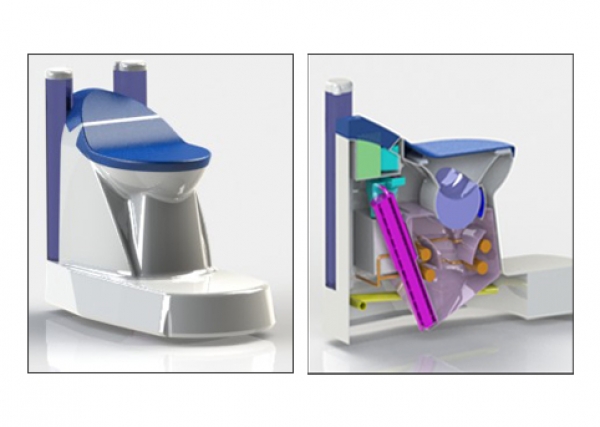
The ‘Nano Membrane Toilet’ is developed by researchers in Cranfield University
The ‘Nano Membrane Toilet’ is developed by researchers in Cranfield University
Back in 2011, the Bill and Melinda Gates Foundation set the ‘Reinvent the Toilet’ Challenge, aiming for the design and creation of a sustainable sanitation solution in order to comfort the 2.5 billion people worldwide who don’t have access to safe, affordable sanitation. The Nano Membrane Toilet, a revolutionary waterless toilet system developed by researchers from Cranfield University, was one of the proposals that stood out and was awarded $710,000 in September 2012. Now, the project will get an additional grant that is "substantially more" than all prior funding, according to a Cranfield spokesperson, who declined to provide the exact amount. Additional funding will be used for the lab prototype’s development and for field tests in Africa.
The Nano Membrane Toilet is meant to initially be used in dense and poor urban areas, where good sanitation is very challenging. ‘It will be very hard to carry out the scheduled maintenance in remote areas, mostly because the toilet needs maintenance by a technician every six months (at a minimum to replace certain parts)’, says Alison Parker, a lecturer in International Water and Sanitation at Cranfield Water Science Institute. ‘Our team will not move into remote areas until the technology proves itself in cities’, she adds.
How the toilet system works
The toilet's actual design is rather complex: the toilet flush uses a unique 270 degrees rotating mechanism to transport the mixture from the toilet bowl into a vat and a scraper tool that wipes off any residual waste from the bowl. Through sedimentation, solids (faeces) are separated from liquids which rise to the top. A nanostructured membrane helps the water vapor that exists as part of the liquid waste move into a vertical tube in the rear of the toilet. The unique membrane wall facilitates water transport in the vapour state rather than the liquid state which reduces pathogens and volatile compounds. A novel nano-coated bead enables water vapour recovery as water droplets are formed at the nanobead surface. Once the droplets form a critical size, the water drains into a collection vessel for reuse. As for the residual solids, a mechanical screw transports them out of the toilet and into a separate holding chamber, where they are coated with a biodegradable nano-polymer which blocks odour and left to dry out. A gasifier burns the dried faeces into ash, producing the adequate energy for the system to run.
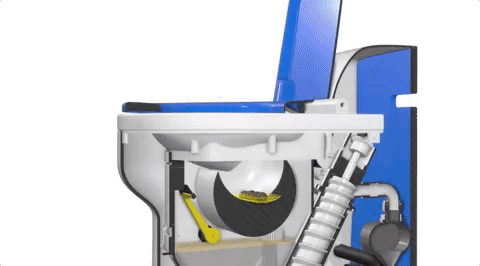
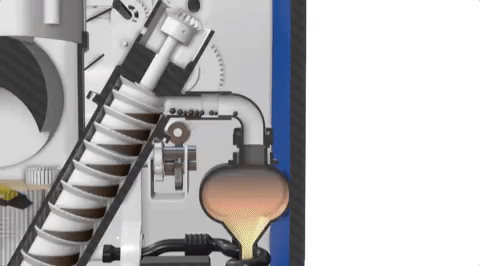
Every week, the solid waste and water must be removed by a local technician, who will also replace the toilet's batteries if needed. This water can be used for watering the plants, cleaning, cooking, and bathing. The solid waste ends up at a thermo-processing plant to be turned into energy for the community.
The toilet is designed for a household of up to 10 people and will cost just $0.05 per day per user. However, results from the field tests remain to be seen, as scalability is always a challenge for those types of designs. There is also the problem with toilet paper, as users have no choice but to throw it into a nearby waste bin, but in the future the team hopes to devise a way for it to be burnt.
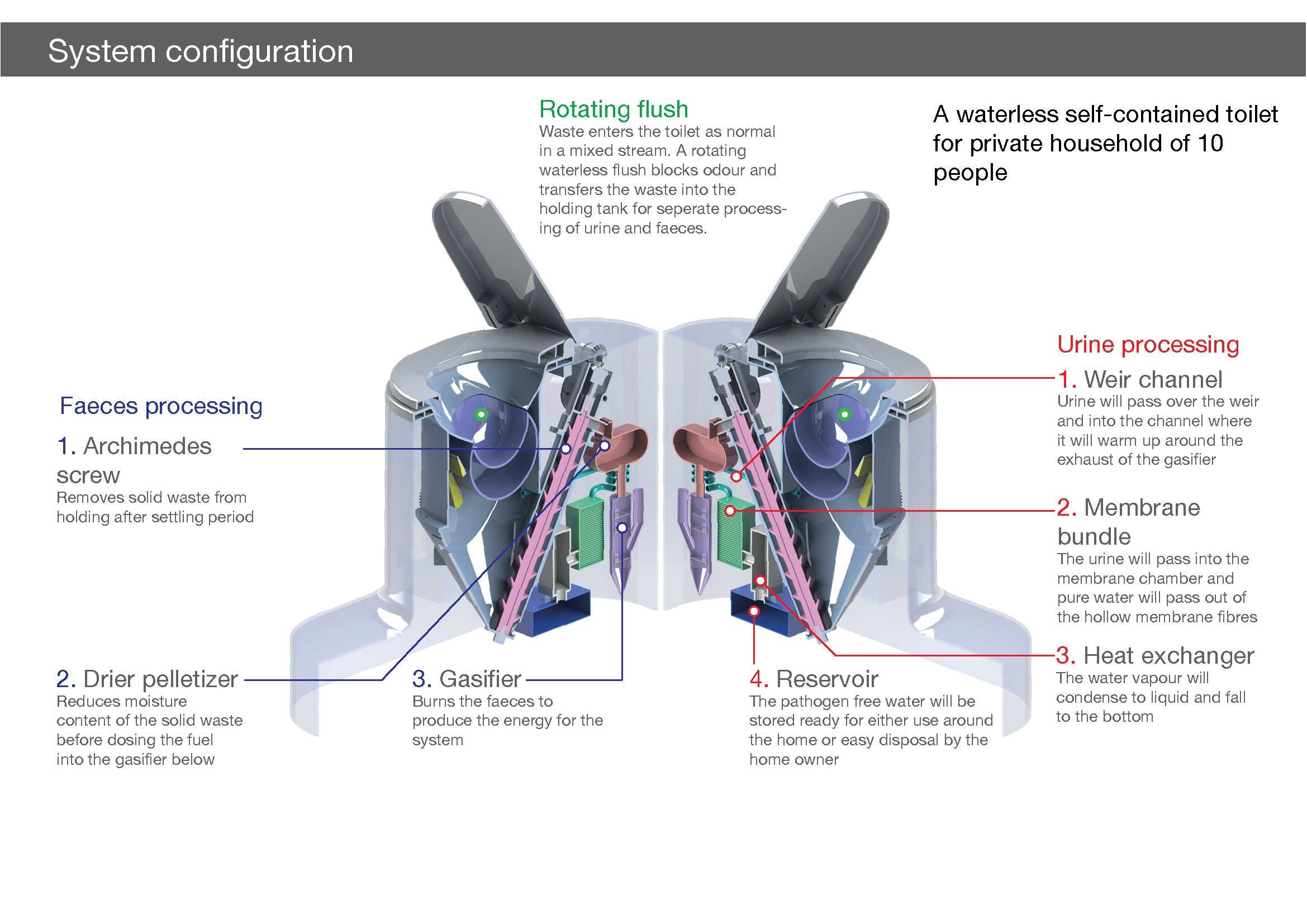
Image source: Cranfield University
Source: Business Insider
Source: Business Insider
Media
Want to read more like this story?

March 22nd is World Water Day!
Mar, 22, 2015 | NewsSince 1993, the United Nations has designated March 22nd of each year as World Water Day, a day dedi...
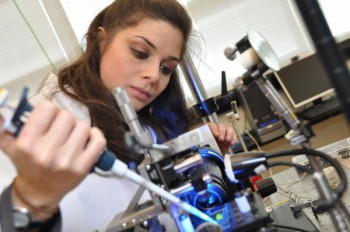
Researchers have developed a miniaturized water quality sensor that can monitor drinking water quality in real time
Oct, 03, 2017 | NewsThis tiny and inexpensive device -built using a 3D printer- can be deployed anywhere in the water di...

Next generation reverse osmosis water purifier
Nov, 16, 2016 | NewsWaterO brings highly-filtered drinkable water to the kitchen table WaterO brings highly-filtered...

World’s first bicycle lane paved with used toilet paper
Mar, 08, 2018 | NewsAs it turns out, mixed with other ingredients, the cellulose from TP looks and feels pretty much jus...

Ancient engineering methods to address water shortages
Jul, 31, 2019 | NewsAccording to a new study, published in Nature Journal, a 1,400-year-old system of canals that divert...

Hybrid biomass and solar energy system for water desalination
Sep, 12, 2017 | NewsThe integrated desalination system could provide drinking water to poor and rural communities at a l...

Thames Water Accelerates Plans to Secure South East's Future Water Supply
Jun, 07, 2024 | NewsToday marks a significant step in securing the future water supply for the South East as Thames Wat...
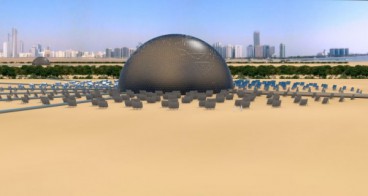
The solar-dome desalination system
Nov, 07, 2017 | NewsSince desalination projects require enormous amounts of energy, researchers are working on alternati...

SuntoWater generators produce 150-400L of potable water per day out of thin air
Mar, 06, 2017 | NewsThey can be powered by solar or solar plus grid power They can be powered by solar or solar plus...
Trending

Vertical gardens in Mexico City to combat pollution

Characteristics of Load Bearing Masonry Construction

Taipei 101’s impressive tuned mass damper

Saudi Park Closed After 360 Big Pendulum Ride Crashes to Ground, 23 injured

Dutch greenhouses have revolutionized modern farming

Federal court rules Biden’s offshore drilling ban unlawful


